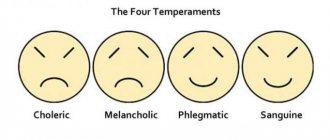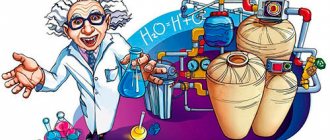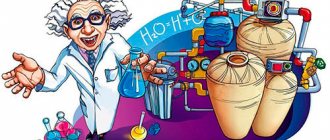Analyzer
- part of the nervous system, consisting of many neurons that
perceive, conduct and analyze specific information.
Components of any analyzer:
1. Peripheral department
- represented by the perceptive areas of the nervous system - receptors (sense organs - complex receptors).
2. Wiring department
- represented by afferent neurons, pathways and subcortical centers.
3. Central department
- represented by areas of the cerebral cortex that perceive afferent signals.
Introduction
An analyzer is a set of receptors and neurons of the brain involved in processing information about signals from the external or internal world and in obtaining an idea (sensation, perception) about them. All analyzers consist of three main sections: peripheral (in which the signal from the outside world is converted into an electrical process), conductive – in which information is processed and carried to the higher parts of the brain, and, finally, the central or cortical section, in which the final one occurs.
Thus, each analyzer is a system consisting of three links: a receptor, or peripheral, section, a conductive section, and a central, or cortical section.
Depending on the functions they perform, analyzers are divided into: skin analyzer, olfactory analyzer, visual analyzer, auditory analyzer, vestibular apparatus, taste analyzer, interoreceptive and motor analyzers.
Terminology and description
The term “analyzer” was introduced by I. P. Pavlov. With its help, he identified an integral nervous mechanism that is responsible for the perception and processing of information from external and internal stimuli. Psychologists distinguish several types of analyzers that are responsible for receiving data - motor, cutaneous, gustatory, olfactory, auditory, visual.
There are other interpretations of this term. According to Yaroshevsky and Petrovsky, the analyzer is a nervous apparatus that is responsible for reading information through stimuli and processing data.
According to Crook and Bleicher, the analyzer is a separate functional formation of the central nervous system. With its help, the perception of internal, external information about the phenomena that occur inside and around the body is carried out.
Another interpretation of this term can be found in the complete explanatory dictionary, which was compiled by A. S. Nikiforov. Analyzer is a connection between the structures of the central and peripheral nervous system. With their help, information is received, processed, and transmitted from the external environment to parts of the brain.
According to another interpretation, an analyzer is a set of devices for automatic data analysis, taking into account the characteristics of body tissues, biochemical, and physiological processes.
Operating principle of the analyzer:
- It can carry out parallel multi-channel information processing. This is possible because there are three forms of increasing the reliability of perception - replication of a certain stimulus by different receptors that belong to the same analyzer, simultaneous operation of several information analysis systems, duplication of the stimulus by paired analyzers.
- Signals in the central nervous system are integral and connected with other signals. A person perceives reality objectively.
- In the space between the receptors and the projection field, information selection occurs. This is necessary to prevent the receipt of too much data over a certain period of time.
- When processed, information goes through several levels, each of which is more complex than the previous one.
Analysis of information coming from outside is carried out through the work of detector neurons. They are responsible for the formation of excitation.
General properties of analyzers
I. P. Pavlov proposed replacing the name “sensory organ” with the term “analyzer”, since the established concepts: the eye is the organ of vision, the ear is the organ of hearing, and others - do not correspond to reality. After all, the eye or ear is only a perceptive, or receptor, part, in addition to which there is also a conducting part (centripetal nerve pathway), transmitting information from the receptors to the cerebral cortex, where the processing of nerve signals into visual, auditory, and olfactory sensations occurs etc. Thus, each analyzer is a system consisting of three links: the receptor, or peripheral, section, the conductive and central, or cortical, sections.
The mechanism of receptor excitation is as follows. An external factor, acting on a receptor, causes depolarization of its surface membrane - receptor, or generator potential. The receptor potential depends on the strength of the stimulus and can be summed up under the influence of stimuli acting quickly one after another. The presence of receptor potential is the essence of the initial stage of excitation.
General properties of analyzers: sensitivity, specificity, ability to respond to ongoing stimulation, sensitization, reproduction of sequential images, adaptation.
The most important property of receptors is their extreme sensitivity, that is, a very low threshold of stimulation, determined by the minimum energy required to produce a sensation. However, this threshold will not be low for all stimuli, but only for adequate ones that correspond to a given receptor. A quantitative measure of sensitivity is the threshold intensity, that is, the lowest intensity of the stimulus, the impact of which gives sensation. The lower the threshold intensity, or, as is often simply said, the threshold, the higher the sensitivity, and vice versa.
Eye receptors can also react to other, inadequate stimuli. By applying an irritant that is inappropriate for the eye, such as an electric shock or shock, you can induce the sensation of light. The second property of receptors, directly related to the first, is their specificity, selectivity, differentiated response to energy of a certain type. And one more important property the receptors have is their ability to respond to ongoing irritation. The nerve fiber responds to stimulation with only a single excitation, and the receptor sends signals until the stimulus ceases. This property informs about the duration of exposure to the analyzer, that this stimulus is still affecting the body.
The general properties of analyzers also include sensitization - an increase in excitability under the influence of repeated stimuli.
Consecutive images are phenomena formed in the analyzer after the cessation of the action of stimuli. For example, after the orchestra has stopped playing, the sounds can still be heard for some time. The perception of a certain type of energy is characteristic not only of the receptor part of the analyzer, but also of the brain. During brain surgery, an electric current was applied to various areas of the brain under local anesthesia. If irritation was applied to the occipital lobe of the cortex, then the subject saw flickering spots of light; when irritating the temporal lobe, he heard short monotonous sounds.
Analyzers are inherently trainable. This property consists of both increasing sensitivity and accelerating adaptation processes under the influence of the sensory activity itself.
Under normal operating conditions, analyzers are in constant interaction. And such interaction is completely “rational”, biologically justified. It manifests itself in the fact that a stimulus falling on any one afferent system causes changes in the functional state of not only this afferent system, but also others.
The sensations that arise in response to a stimulus have four properties: quality, intensity, extent and duration. Extent - the volume of sensation will not be the same if you look at an illuminated circle the size of a penny coin or at a circle whose diameter barely fits on a large movie screen. If you put your finger in hot water, the feeling of the burn will be less than when you lower your entire hand, that is, the extent of the sensation in both latter cases will be greater. A flash of light, a short sound, or a prick will cause a short-term sensation; the sun in a cloudless sky, the incessant wind, the long sound will give rise to a long-lasting sensation.
The quality of sensation is related to the type of physical stimulus. Electromagnetic waves, depending on their length, cause the sensation of one color or another; mechanical vibrations in the range from 20 to 20,000 per second are perceived by a person as a tone of one or another pitch. The intensity of the sensation depends on the energy value of the stimulus. The extent and duration of the sensation depend on the spatial magnitude of the stimulus and its duration. However, there are exceptions. For example, a white square on a black background appears larger than a black one on a white background—these are so-called optical illusions. Stimulations of unequal strength cause different sensations. The amount by which it is necessary to change the strength of stimulation in order to cause a noticeable increase in sensation is related to the initial strength of the stimulus (Weber-Fechner law), that is, the increase must be a certain proportion of the stimulus.
Characteristic of analyzers is their ability to adapt the level of their sensitivity to the intensity of the stimulus. This property is called adaptation. In general, during the adaptation process, at high intensities of influencing stimuli, sensitivity decreases and, conversely, at low intensities it increases.
A very peculiar manifestation of interaction is the vicariation (from the Latin vicarius - replacing) of the senses, or their interchangeability. We must immediately make a reservation that such replacement in the literal sense of the word never happens and cannot be complete.
Signal discrimination.
To assess changes in intensity, temporal and spatial indicators of the stimulus, it is necessary to ensure a different reaction to a minimal difference
between stimuli.
This minimal difference is the threshold of discrimination.
According to the Weber-Fechner law
the sensation increases in proportion to the logarithm of the increase in the intensity of stimulation.
For spatial discrimination
For two signals, it is necessary that between the receptors they excite there is at least one unexcited receptor.
Varieties
For normal functioning of the body, receiving a full flow of data from internal and external stimuli, all types of analyzers must function:
- Tactile or tactile. The sense organs that act as receptors are the papillary layer of the dermis and the tactile corpuscles. The conduction section consists of the medulla oblongata, spinal cord, diencephalon, and centripetal nerve.
- Olfactory. The peripheral section is a set of olfactory receptors of the nasal epithelium. The conduction section consists of the olfactory nerve. The central department is the olfactory center, which is located in the temporal lobe of the CBP.
- Auditory. The peripheral section consists of sensory hair cells. The auditory nerve belongs to the conduction section. Central is the auditory center, which is located in the temporal lobe of the CBP.
- Flavorful. The peripheral section consists of taste buds located in the oral cavity. The conduction section is the glossopharyngeal nerve. The central division consists of the taste center, which is located in the temporal lobe of the CBP.
- Visual. Peripheral - receptors located on the retina of the eye. The conductor consists of the optic nerve. The central one is the optic nerve, which is located in the occipital lobe of the CBP.
- Skin-muscular. The peripheral section consists of proprioceptors, which are located in ligaments and muscles. Conductor - centripetal nerve, medulla oblongata, spinal cord, diencephalon. The central section consists of the motor zone, to which the parietal and frontal areas of the brain are adjacent.
- Vestibular. Peripheral - vestibule of the inner ear, semicircular tubules. The conduction section consists of the vestibulocochlear nerve. The central department is the cerebellum.
If any of the analyzers deviates from the norm during operation and does not perceive a full flow of information, other departments try to supplement it, compensating for the failures.










